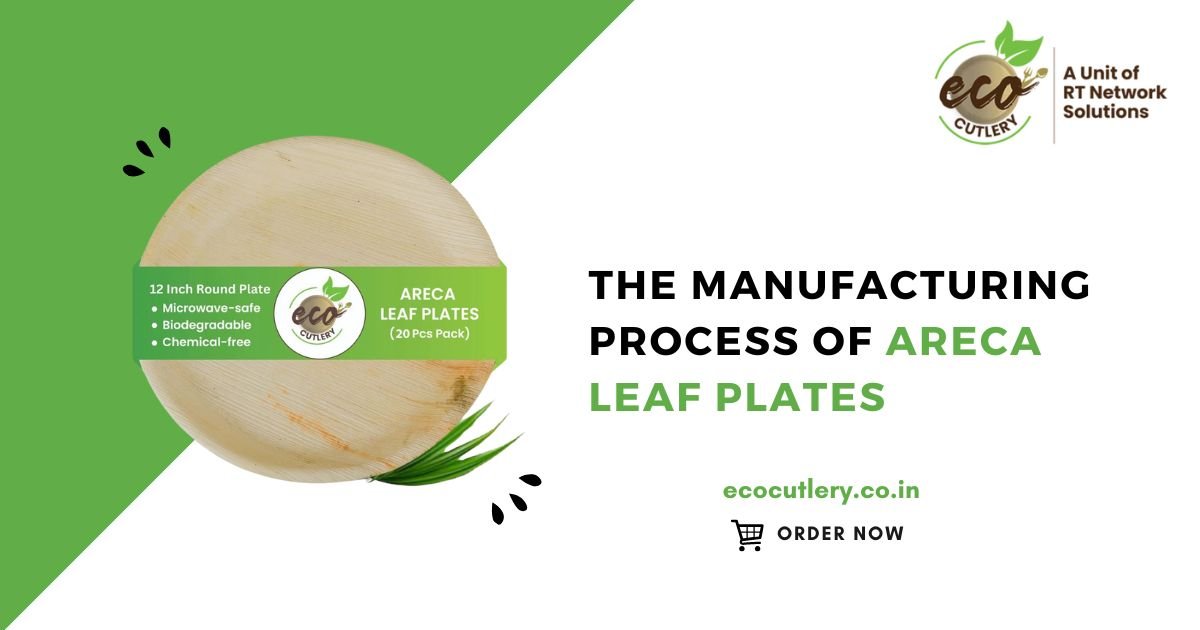Areca leaf plates are a popular eco-friendly alternative to plastic or Styrofoam plates, widely used in serving food for special occasions, festivals, and parties. These plates are made from the fallen leaves of the Areca palm tree, which are abundant, biodegradable, and non-toxic. The manufacturing process of Areca leaf plates involves several stages, each contributing to the creation of a sustainable and functional product. So, let’s take a closer look at the process involved.
The Process of Manufacturing Areca Leaf Plates
Step 1: Harvesting Areca Leaves
The first step in the manufacturing process of Areca leaf plates is the harvesting of Areca leaves. These leaves are collected from Areca palm trees, primarily in tropical regions where the trees are grown. The leaves are not cut from living trees but are collected from those that have naturally fallen. It ensures that the Areca trees remain healthy and productive.
The harvesting process is done manually, with workers picking up large, dried leaves from the ground. The leaves are then transported to the production facility. Since the leaves are naturally fallen, they do not require cutting or harming the tree, making this an environmentally sustainable process.
Step 2: Cleaning and Drying
After collecting the leaves, they are thoroughly cleaned to remove any dust or debris, and other impurities. This cleaning process is essential to ensure the plates are hygienic and safe for food use. The leaves are rinsed with water and sometimes wiped with a damp cloth to ensure all dust and residues are removed.
After cleaning, the leaves are left to dry naturally. Drying is a crucial step as it helps to remove any remaining moisture, ensuring that the plates will be sturdy and durable. This is typically done in a well-ventilated area, either under the sun or in a controlled indoor environment. The drying process also helps to soften the leaves, making them easier to mould and press in the next stages.
Step 3: Moulding and Pressing
Once the Areca leaves are cleaned and dried, they are ready for moulding and pressing. In this stage, the leaves are placed into moulds of various sizes and shapes, depending on the type of plate being produced. The leaves are carefully arranged in the moulds and subjected to heat and pressure to form the desired shape.
Pressing the leaves ensures that they become rigid and retain the shape of the mould. The heat helps soften the fibres of the Areca leaves, making them more pliable, while the pressure ensures that the plates are compact and sturdy. This process typically involves hydraulic presses or manually operated presses, depending on the scale of the manufacturing operation. The result is a perfectly moulded Areca leaf plate that is both strong and functional.
Step 4: Cutting and Finishing
After the plates are moulded and pressed, they are cut and finished to their final shape and size. The edges of the plates are trimmed to remove any rough or uneven portions. Depending on the design, additional features like grooves, borders, or embossing may be added for aesthetic purposes.
At this stage, the plates are also inspected for any imperfections or damages that may have occurred during moulding or pressing. Any plates that do not meet quality standards are discarded or recycled into other products, ensuring minimal waste in the manufacturing process.
Some manufacturers may also apply a light coating to the plates for extra protection or to improve their visual appeal. This step is optional but can enhance the plate’s durability, especially if it is being used for more heavy-duty applications.
Step 5: Packaging
Once the Areca leaf plates are cut, finished, and inspected, they are sent for packaging. The plates are stacked carefully and wrapped in plastic or other eco-friendly packaging materials. The packaging is designed to protect the plates during transportation while also keeping them hygienic until they are used.
Areca leaf plates are often sold in bulk, with packaging that reflects the eco-friendly nature of the product. Many manufacturers take pride in using biodegradable or recyclable materials for packaging to maintain the sustainability aspect of the product. The packaged plates are then labelled with information about their use, benefits, and origin, before being shipped to retailers or directly to consumers.
Areca leaf plates are a perfect example of how nature and craftsmanship come together to create a functional, eco-friendly product. From harvesting the leaves to packaging the final product, each step in the process is designed to ensure quality, sustainability, and minimal environmental impact. As the demand for eco-friendly alternatives to disposable tableware continues to rise, Areca leaf plates are likely to remain a popular choice for both consumers and businesses alike.



